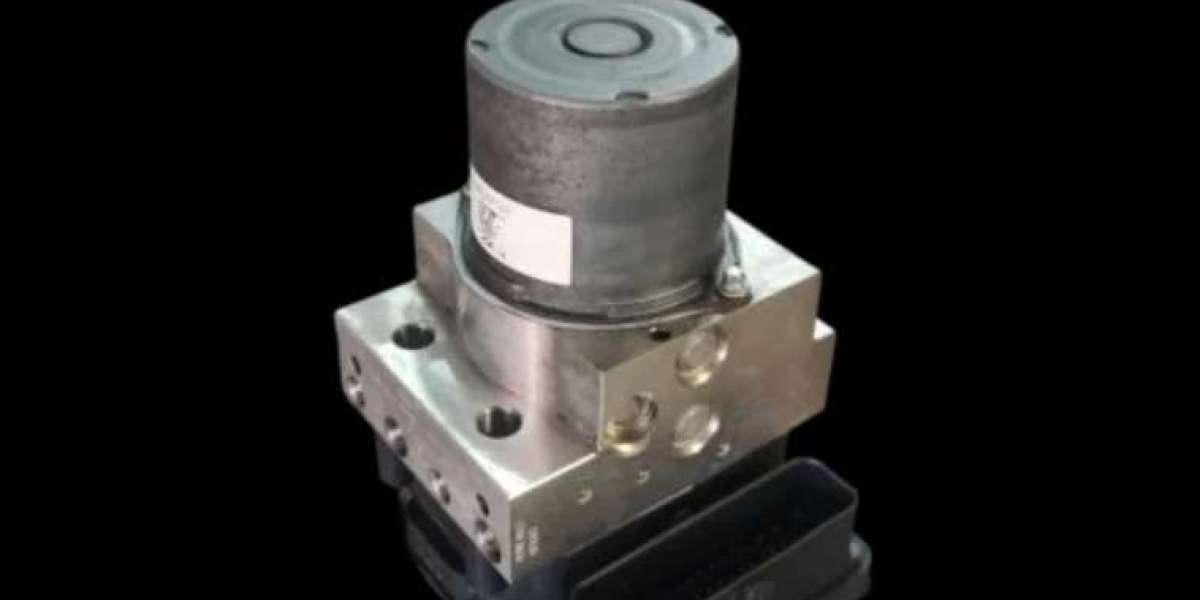The Unsung Hero of Modern Braking: Everything You Need to Know About the ABS Pump
Every time you apply the brakes, a quiet system is working behind the scenes to keep your vehicle stable, prevent wheel lock-up, and help you avoid losing control. At the heart of this system is a powerful component known as the ABS pump. Though rarely seen or discussed, the ABS pump plays a central role in how your car safely manages emergency stops—especially on slippery or unpredictable roads.
This article explores what the ABS pump does, how it works, why it’s critical for safe driving, and what to watch for if something goes wrong.
What Exactly Is an ABS Pump?
The ABS pump is part of the Anti-lock Braking System (ABS), a safety feature designed to prevent wheels from locking up during hard braking. Without it, a sudden stop could cause one or more wheels to lose traction, leading to dangerous skids or loss of steering control.
The ABS pump works in conjunction with electronic sensors and hydraulic valves. When the ABS detects that a wheel is about to lock, it momentarily reduces brake pressure on that wheel. The pump then kicks in to restore pressure once traction is regained. This rapid modulation of brake force allows all four wheels to stay balanced while maintaining grip and control.
How the ABS Pump Works
The full braking process with ABS is surprisingly complex—and incredibly fast. Here’s how the ABS pump fits into it:
Wheel speed sensors continuously monitor how fast each wheel is spinning.
If a wheel decelerates too quickly—indicating it’s about to lock—the ABS control module intervenes.
The module commands valves to release pressure in that wheel’s brake line.
The ABS pump immediately restores that pressure once traction is recovered, ensuring continued braking force.
This cycle repeats many times per second, delivering smooth, controlled stops.
You may feel this happening as a pulsing sensation in the brake pedal during sudden stops. That pulse is the system actively regulating brake pressure via the pump.
Why the ABS Pump Matters So Much
Most drivers take ABS for granted—until it fails. But the ABS pump is crucial to vehicle safety, especially in conditions where traction is compromised. Here’s why:
Helps maintain steering ability during emergency braking
Prevents wheels from locking, avoiding uncontrolled skids
Works in tandem with other safety systems like traction control and electronic stability control
Improves braking performance on wet, icy, or gravel roads
Reduces stopping distance under specific conditions
In short, without a functioning ABS pump, your vehicle’s ability to brake safely in emergencies can be significantly compromised.
Signs of ABS Pump Failure
Though ABS pumps are designed to last a long time, they are not immune to wear and malfunction. Recognizing early warning signs is crucial to maintaining your safety. Common symptoms include:
ABS warning light stays illuminated
Unusual brake pedal behavior, such as a mushy or unresponsive feel
Clicking or buzzing noises during braking
ABS doesn't engage, even during hard braking
Loss of traction control or stability features, since many rely on the ABS pump
If you notice any of these symptoms, it’s important to have the system inspected right away. Delaying repairs could reduce the effectiveness of your braking system when you need it most.
Common Causes of ABS Pump Problems
ABS pump failures can stem from several causes. Here are the most frequent culprits:
Brake fluid contamination: Old or dirty brake fluid can corrode the pump's internal components.
Worn-out pump motor: Like any motor, the electric unit driving the pump can fail over time.
Electrical issues: Blown fuses, faulty wiring, or a malfunctioning control module can disrupt the pump’s power supply.
Internal valve problems: Debris or corrosion can cause valves to stick or leak, disrupting fluid pressure regulation.
Most problems develop gradually, so regular brake inspections can help catch issues before they lead to full system failure.
Is It Safe to Drive with a Bad ABS Pump?
Technically, yes—you can still drive without a working ABS pump. Your vehicle's base braking system will still function. However, it comes with serious risks:
You lose the anti-lock braking function, increasing the chance of skidding.
Steering becomes more difficult during emergency braking.
Stopping distance may increase, particularly on wet or uneven roads.
You lose support from stability and traction systems, which depend on the pump.
It’s always best to view a failed ABS pump as a high-priority issue. Waiting to repair it could result in a dangerous situation when you least expect it.
How to Maintain Your ABS Pump
There’s no standard replacement interval for ABS pumps, but you can take steps to extend their life and keep the system running smoothly:
Flush brake fluid regularly: Most manufacturers recommend changing brake fluid every two to three years to avoid moisture buildup.
Keep the brake system clean: Dirt and contaminants can interfere with hydraulic parts.
Check wiring and fuses during regular maintenance to ensure proper electrical connections.
Don’t ignore warning lights: ABS issues don’t go away on their own—addressing them early is cheaper and safer.
Avoid aggressive driving habits that overuse the ABS system unnecessarily.
Preventive maintenance is often the best defense against costly repairs and compromised braking performance.
Final Thoughts: The ABS Pump Saves Lives
Modern vehicles rely on advanced systems to protect drivers and passengers. Among them, the ABS pump is a critical piece of safety equipment that delivers fast, intelligent braking control under pressure. Whether you’re facing a sudden stop in traffic or navigating slippery roadways, the ABS pump is quietly working to give you the best chance of maintaining control and avoiding danger.
Understanding how this component works—and what to do when something goes wrong—can help you stay safer behind the wheel. So the next time you feel that quick pulse in the brake pedal, remember: that’s your ABS pump doing its job to protect you.








